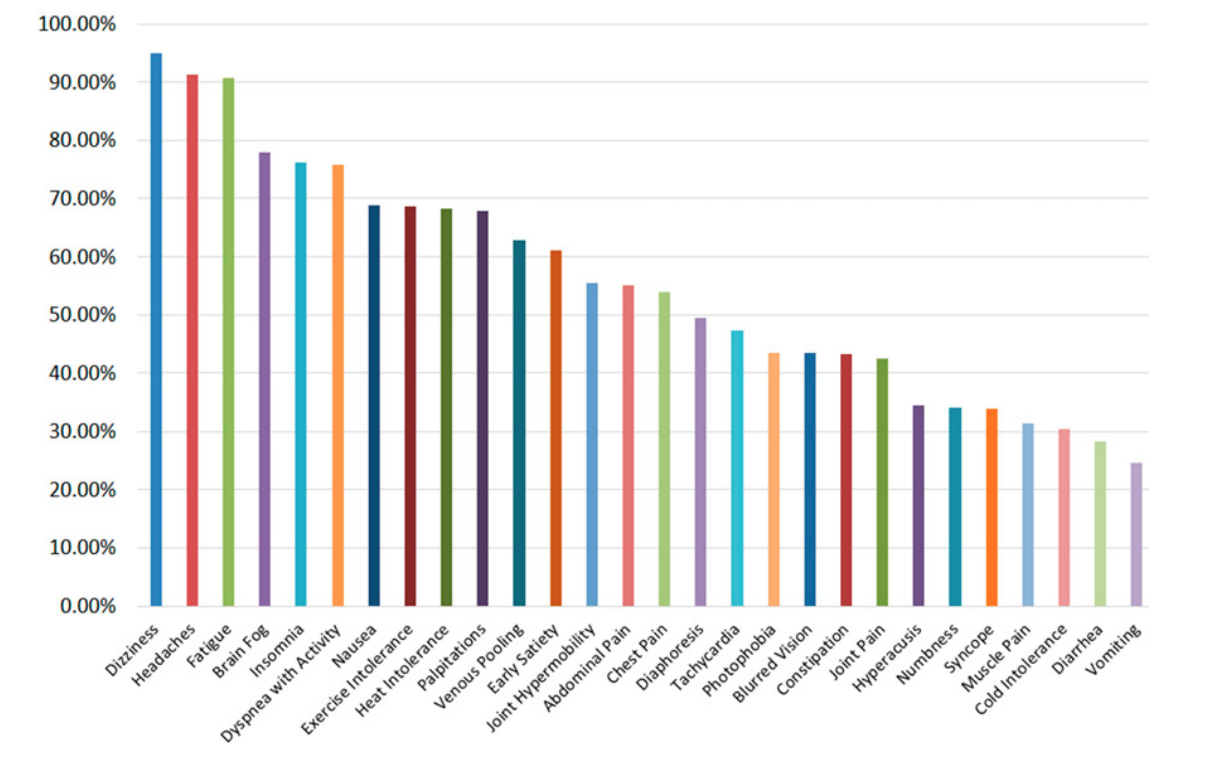Why is it taking so long to recover from my concussion? You might have POTS.
Introduction
Postural Orthostatic Tachycardia Syndrome (POTS) is a condition characterized by an abnormal increase in heart rate upon standing, leading to a variety of symptoms. When POTS is triggered or exacerbated by a concussion, it can present additional challenges for patients. In this blog post, we will explore the relationship between POTS and concussions, the symptoms experienced, how it is diagnosed and potential treatment approaches to manage this elusive condition.
1. What is Postural Orthostatic Tachycardia Syndrome (POTS)?
POTS is a form of dysautonomia, a condition affecting the autonomic nervous system, which is responsible for regulating bodily functions such as heart rate, blood pressure, digestion, and more. In POTS, the heart rate increases significantly when transitioning from lying down to standing up, leading to dizziness, fainting, and other symptoms.
2. POTS and Concussions: The Connection
While the precise link between concussions and POTS is not fully understood, researchers suggest that autonomic dysfunction may play a role. After a concussion, there can be disruptions in the autonomic nervous system, causing irregularities in heart rate and blood pressure regulation, which can contribute to POTS development or exacerbation. POTS in the general population is found to be 0.1-1% of the population being much more common in adolescent and young adult women. This percentage is found increase to around 7% in children and young adults after a concussion but is still more common in women than men.
3. Symptoms of POTS Post-Concussion
When POTS occurs after a concussion, the symptoms may overlap, making diagnosis and management more challenging. Common symptoms include:
- Orthostatic intolerance: Dizziness, lightheadedness, and fainting upon standing.
- Tachycardia: Significant increase in heart rate when standing.
- Fatigue: Persistent tiredness even after minimal physical activity.
- Brain fog: Difficulty with concentration, memory, and cognitive function.
- Headaches: Frequent and intense headaches, which may be migraines.
- Exercise intolerance: Inability to engage in physical activities without experiencing symptoms.
4. How to Diagnosis
Diagnosing POTS post-concussion requires a thorough evaluation by medical professionals. A tilt-table test may be used but is not required for diagnosis. To have a diagnosis of POTS one must have an absence of classic Orthostatic Hypotension and meet the criteria below.
POTS:
HR increase of a minimum of 30 bpm, or > 40 bpm for patients aged 12-19 yo, when transitioning from supine to standing. These findings need to be found positive on at least 2 readings taken at least 1 min apart. This should occur within the first 10 min of standing. To avoid false positives testing, a minimum supine HR of 60 bpm is needed to protect against a POTS diagnosis being made on a patient with a low HR which increases to a normal level upon standing. It is normal to have a slight increase in blood pressure upon standing.
Orthostatic Hypotension:
A fall in systolic BP of at least 20 mmhg (30 mmhg in hypertensive patients), and/or a drop in diastolic BP of at least 10 mmhg within 3 minutes of standing from a supine position.
Autonomic function tests may also be performed to assess heart rate responses and autonomic system function if diagnostic criteria are not met by taking orthostatic blood pressures but a high suspicion for POTS remains.
5. Treatment for POTS
There is no specific cure for POTS, and it is rare to have a spontaneous resolution of symptoms, but symptoms can be significantly improved with specific management techniques. Living with POTS requires a patient-centered and comprehensive approach, involving a team of healthcare professionals and support from family and friends. With proper management, many individuals can experience an improved quality of life and reduced symptom burden.
Managing POTS post-concussion is multifaceted and may include:
- Lifestyle modifications: Adequate hydration, increased salt intake, compression leggings and maintaining a balanced diet.
- Exercise therapy: Gradual and controlled exercise routines tailored to individual needs.
- Medications: Certain medication can be helpful, discuss this with your physician.
- Dietician: Meeting with a dietician is usually a mainstay of POTS management and can be extremely helpful in maintaining appropriate blood volume.
- Physical therapy: To improve strength, balance, and reduce the risk of falls.
- Cognitive rehabilitation: Strategies to cope with cognitive difficulties.
- Psychological support: Counseling or therapy to manage emotional aspects of living with a chronic condition.
Conclusion
Postural Orthostatic Tachycardia Syndrome post-concussion is a challenging combination of conditions that can significantly impact a person's life. Awareness, early diagnosis, and appropriate management are vital for improving outcomes and enhancing the overall well-being of those affected. If you suspect you or someone you know may have POTS, seek medical advice promptly for a comprehensive evaluation and a personalized treatment plan.
References:

